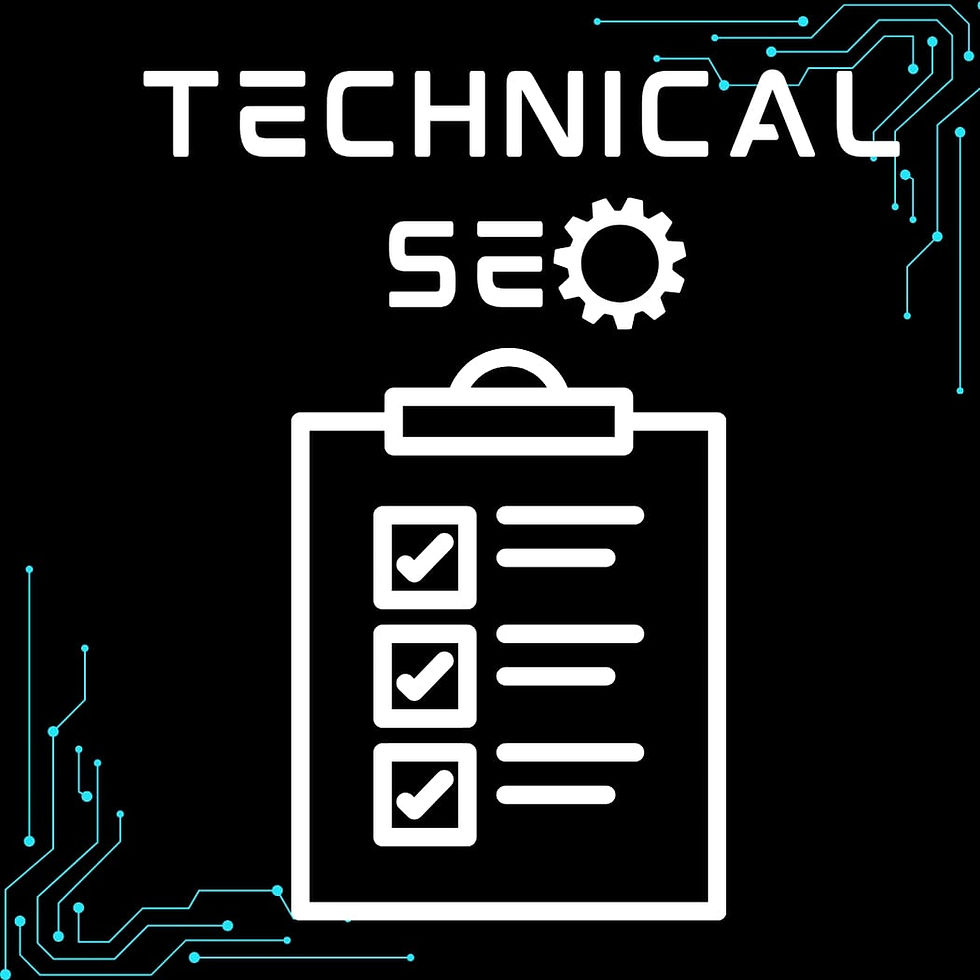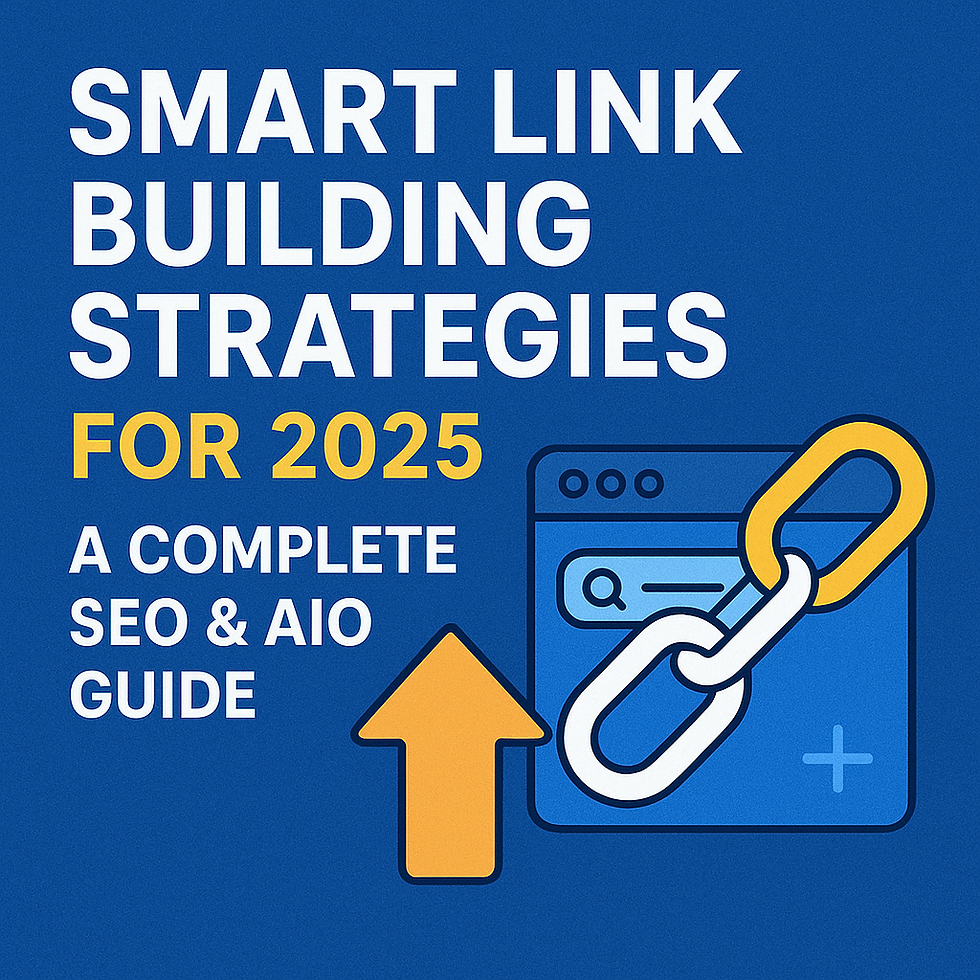Technology SEO: A Practical Health Check Any Team Can Run
- Jahnavi TP
- Oct 15
- 4 min read

When a site scales, small technical issues stack up—untidy URL patterns, slow images, over-eager scripts, mixed content, and confusing redirects. Individually they look minor; together they decide whether search engines can discover, render, and trust your pages. This guide shows a pragmatic, one-week approach any team can run to harden foundations, improve user-perceived speed, and protect results during future releases.
What is Technology SEO?
Technology SEO is the discipline of making the platform behind your content easy to crawl, fast to load, and consistent to index. It covers access (robots and sitemaps), architecture (how pages connect), rendering (server vs. client), performance (Core Web Vitals), status codes and redirects, structured data, and monitoring. Do these well and every campaign—content, links, or PR—works harder because the plumbing is sound.
How does it work in practice?
Start with a limited crawl, sample key templates, and confirm what bots actually render. Map issues to impact, not to volume. Fix a small slice, verify, then scale.
Who is a good candidate for a technical review?
Growing sites, websites that recently migrated, catalogs with filters, and any brand seeing coverage anomalies, crawl spikes, or volatile rankings.
What results can you expect?
Cleaner indexation, fewer errors, better stability, and measurable improvements in Largest Contentful Paint (LCP) and Interaction to Next Paint (INP).
Benefits of an SEO Technical Audit Checklist

A structured seo technical audit checklist turns scattered findings into a plan people can ship. It forces prioritization (impact × effort), assigns owners, and sets verification dates.
Immediate wins you can bank
Remove non-indexable URLs from sitemaps.
Compress and properly size hero images.
Replace chained redirects with a single, clean hop.
Business-level outcomes
Faster pages reduce bounce, reliable rendering improves conversions, and consistent status codes make analytics trustworthy—so decisions improve.
Technical SEO Audit Explained
A compact technical seo audit can run in seven focused themes—one per day—so momentum stays high and the team sees progress.
Day-by-day framework
Day 1 – Access & discovery: Confirm robots.txt, submit clean sitemaps, check canonicals on priority pages.
Day 2 – Architecture & internal links: Keep key URLs within three clicks, fix orphans, standardize URL patterns.
Day 3 – Performance: Optimize images, inline critical CSS, defer non-critical JS, review third-party tags.
Day 4 – Mobile & rendering: Ensure content parity, validate rendered HTML, consider server rendering for essential text.
Day 5 – Status codes & redirects: Remove 404s from live links, keep 301 maps current, return 410 for intentionally removed content.
Day 6 – Index quality: No index thin archives and faceted traps; consolidate duplicates with proper canonicals.
Day 7 – Schema & guardrails: Add Organization/Breadcrumb/content-type schema, validate, and set regression alerts.
Technology SEO — Step-by-Step Process
Scope → Crawl → Validate render → Prioritize → Fix → Re-crawl → Monitor. Keep the loop small so you learn and ship faster.
Audit timeline (week 1 walkthrough)
Kickoff and scoping on Day 0; themed sprints Days 1–7; verification the following week.
Aftercare tips for stable releases
Add pre-deploy checks for sitemaps, robots, and schema; track coverage and Core Web Vitals after each release.
Technical SEO Tools: What to Use When
Choosing the right technical seo tools keeps the work lean and verifiable.
Core stack (start here)
Crawler: Map issues and internal links; export to your tracker.
Performance testing: PageSpeed Insights and Lighthouse for diagnostics; rely on field data for reality.
Search Console views: Coverage, Crawl Stats, and URL Inspection to confirm what bots see.
Monitoring: Uptime, error rates, and simple alerts for coverage changes.
When to add more
Adopt log analysis once scale grows; add synthetic monitoring for key journeys; only introduce a new tool when a concrete question needs it.
How SEO and AIO Supports Technology SEO
All-in-One SEO Guidance: Access comprehensive insights on technical and general SEO in one place. Our blogs cover everything from crawlability to structured data so teams can find what they need quickly.
Practical Tips Any Team Can Apply: Step-by-step advice for site speed, crawlability, structured data, and more ensures your team can run a technical SEO health check with confidence.
Up-to-Date Strategies: Stay ahead with the latest search engine algorithm updates and best practices. We regularly update content to reflect changes in Google’s ranking factors.
Tools & Checklists: Learn which tools and frameworks help teams run technical SEO audits efficiently. Our recommended checklists make audits faster and easier.
Team Collaboration Made Easy: Clear content helps developers, marketers, and content creators work together seamlessly on technical SEO improvements.
Boost Website Performance: Improve site speed, indexing, and search visibility with actionable guidance. Following these insights helps your website perform better in search results.
“By leveraging the practical guidance from SEO and AIO, technology teams can not only run effective health checks but also implement lasting improvements that enhance overall website performance and search rankings.”
FAQs
How long does a technical review take?
A lean pass fits into a week; deeper cleanup work depends on the codebase and team bandwidth.
Is it safe to audit a live site?
Yes—start with read-only diagnostics, then ship fixes in small, reversible batches with monitoring.
What is the cost of a technical audit?
Costs vary by size and stack; we scope by templates, page types, and systems touched, not by vanity page counts.
Conclusion
Running a technology SEO health check doesn’t have to be complicated. By following practical steps, using the right tools, and applying best practices, any team can identify issues and improve website performance. Resources like SEO and AIO make this process easier by providing up-to-date insights, actionable tips, and guidance for cross-team collaboration. Implementing these strategies helps ensure your website stays healthy, fast, and visible in search results—giving your team the confidence to maintain strong technical SEO over time.



Comments